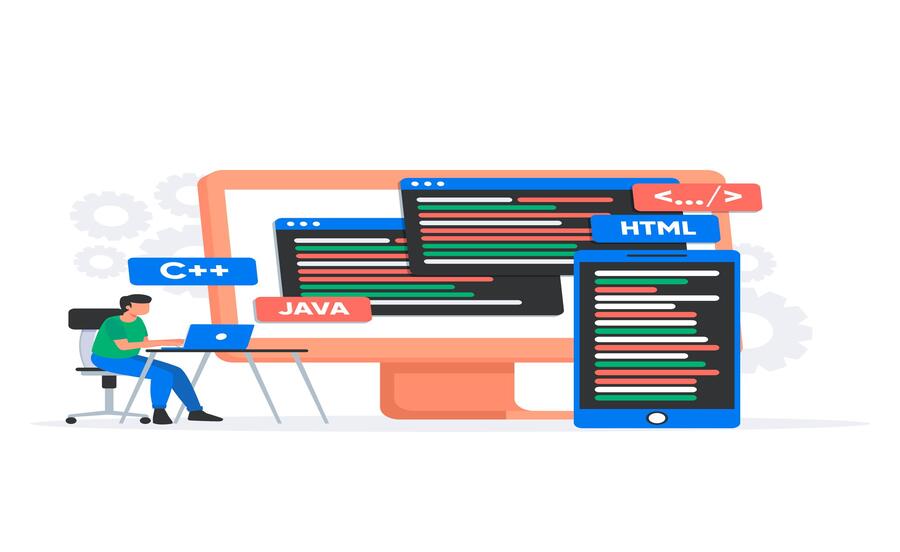
In the vast landscape of web development, the term “Full Stack” has become increasingly prevalent. But what exactly does it entail? From frontend to backend, databases to deployment, the Full Stack encompasses the entire spectrum of web development. In this blog, we’ll delve into the intricacies of Full Stack development, exploring its components, advantages, and its relevance in today’s tech-driven world.
Understanding Full Stack Development
Full Stack development refers to the practice of working on both the frontend and backend of web applications. A Full Stack developer possesses proficiency in multiple programming languages, frameworks, and tools required to build a complete web application from scratch.
Frontend Development
The frontend, or client-side, is what users interact with directly. It involves crafting the user interface (UI) and user experience (UX) using technologies such as HTML, CSS, and JavaScript. Frameworks like React, Angular, and Vue.js have revolutionized frontend development, enabling developers to create dynamic and responsive web applications with ease.
Backend Development
On the flip side, the backend, or server-side, handles the logic, database interactions, and server management. Backend developers work with languages like Python, JavaScript (Node.js), Ruby, and frameworks such as Express.js, Django, and Flask. They design and implement APIs, manage databases using SQL or NoSQL solutions like MongoDB, PostgreSQL, or MySQL, and ensure the smooth functioning of the server.
DevOps and Deployment
In addition to frontend and backend development, Full Stack developers often delve into DevOps practices for seamless deployment and continuous integration. Tools like Docker, Kubernetes, and Jenkins streamline the deployment process, enabling developers to automate tasks and ensure efficient delivery of applications.
Advantages of Full Stack Development
- Versatility: Full Stack developers possess a diverse skill set, allowing them to work on various aspects of a project.
- Efficiency: With knowledge of both frontend and backend, Full Stack developers can tackle tasks more independently, speeding up the development process.
- Cost-Effective: Small teams or startups can benefit from Full Stack developers who can handle multiple roles, reducing the need for hiring specialized personnel.
- Holistic Understanding: Full Stack developers have a comprehensive understanding of the entire development process, facilitating better collaboration between teams.
The Relevance of Full Stack Development Today
In today’s fast-paced tech industry, where agility and versatility are paramount, Full Stack development has emerged as a highly sought-after skill set. Companies value developers who can adapt to different technologies and contribute across the entire development stack. Whether it’s building a prototype, optimizing performance, or deploying a scalable application, Full Stack developers play a crucial role in driving innovation and efficiency.
Challenges in Full Stack Development
While Full Stack development offers numerous benefits, it also presents its own set of challenges:
- Complexity: Managing both frontend and backend components can be complex, especially for large-scale applications with intricate requirements.
- Skill Acquisition: Learning multiple technologies and staying updated with the latest trends can be daunting for aspiring Full Stack developers.
- Performance Optimization: Balancing performance between frontend and backend, optimizing database queries, and ensuring scalability pose significant challenges.
- Security: Full Stack developers must be vigilant about security vulnerabilities, implementing best practices to safeguard user data and prevent unauthorized access.
- Maintenance: As applications evolve, maintaining code quality, updating dependencies, and addressing bugs become ongoing tasks for Full Stack developers.
Future Trends in Full Stack Development
As technology continues to evolve, several trends are shaping the future of Full Stack development:
- Microservices Architecture: Adopting a microservices architecture allows developers to break down applications into smaller, independently deployable services, enhancing scalability and flexibility.
- Serverless Computing: Serverless platforms like AWS Lambda and Azure Functions abstract server management, enabling developers to focus on writing code without worrying about infrastructure.
- Progressive Web Apps (PWAs): PWAs combine the best features of web and mobile applications, offering a seamless user experience across devices and offline capabilities.
- Artificial Intelligence (AI) Integration: Integrating AI and machine learning capabilities into Full Stack applications enables intelligent decision-making, personalized user experiences, and automation of repetitive tasks.
- Blockchain Technology: Implementing blockchain technology for secure and transparent transactions is gaining traction in various industries, requiring Full Stack developers to adapt and integrate blockchain solutions into their applications.
Conclusion: Navigating the Evolving Landscape of Full Stack Development
In the ever-evolving landscape of Full Stack development, staying abreast of emerging technologies, trends, and best practices is crucial for success. By embracing challenges as opportunities for growth and innovation, Full Stack developers can continue to push the boundaries of what’s possible and deliver transformative solutions to meet the evolving needs of users and businesses alike.
As we look to the future, the role of Full Stack developers will remain pivotal in driving technological advancements and shaping the digital experiences of tomorrow. With dedication, adaptability, and a passion for learning, Full Stack developers can chart a course towards a brighter, more interconnected future, powered by innovation and collaboration.
So, let’s embark on this journey together, embracing the dynamic nature of Full Stack development and harnessing its vast potential to create a better, more interconnected world for generations to come. And with tools like ChetsApp by our side, we can navigate this journey with confidence, efficiency, and a shared commitment to excellence.

